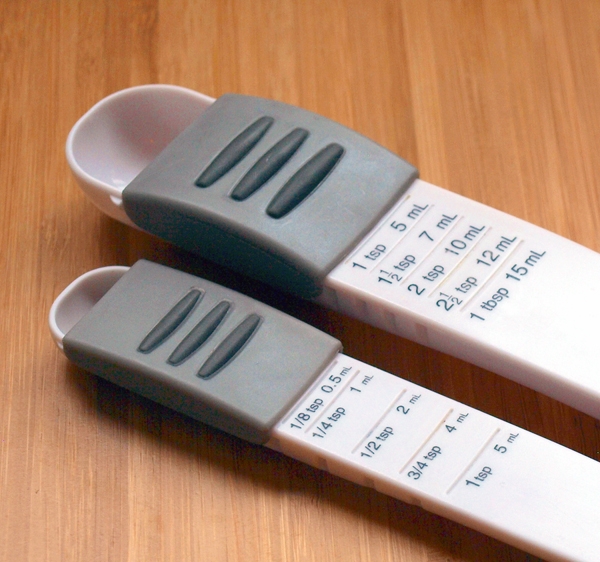
A Word About Measurements
Before I proceed in posting a flurry of cooking entries, I thought I would take a moment to address the old Imperial vs Metric issue. As you can see from the picture below, I employ a wide variety of tools to concoct and/or reinterpret other’s recipes from as many countries as I can get my paws on.
The joys inherent in such an endeavor are that you are constantly trying to decipher different systems of measurement. The biggest challenge is trying to translate a system based on volumes (US/Imperial) to one based on weights (metric) and vice verses. I am going to whole heatedly ignore the unique world of the Aga (place in a warm oven?!) as so few people even know what an Aga is let alone possess one, that those who fall into that minority can teach themselves their own rules. Don’t be fooled by snazzy programs that assure you that this conversion can be easily accomplished through the magic of math – the problems are more amorphous than that.
Now most tools come with handy information printed on them but they are really not very helpful. Metric is based on the mass (weight) and volume on a unit of water, as in 1 millilitre (1 ml) is 1/1000 of a litre of water. But then that same drip of water conveniently becomes the basis for 1 gram. Here is a screen shot from the math league that may make more sense.
The end result is that salt, sugar and spices weigh much less than water (as they usually have had said water removed for preservation), and even if 1 ml of water equals 1 gram in metric mythology – foodstuffs just don’t behave in the same manner. Just to flog this horse, 1 teaspoon of a spice should in theory equal 5 ml or 5 grams if you will.
But as you can see 1 teaspoon of a spice mix is about HALF of what that same spice mix is in grams/millilitres. All of this is a very long-winded introduction to what will hopefully be a methodology of measurement that will be accessible to all. It does combine the use of teaspoons as well as mix of oz/cups/pounds and of course grams/kilos and litres. For anyone in a non-cups and teaspoons countries – they are indeed actual standardized weights and measurements and really shouldn’t be substituted for what you happen to use as your general cutlery. Sets of both cups and teaspoon are available from places like pounds shops and supermarkets as well as more high-end kitchen stores or Amazon – and don’t forget Pampered Chef or Jamie at Home reps. Here is a screen shot from allrecipes.co.uk that will hopefully give an indication of what the future recipes will resemble.
In defense of metric, it is fantastic for baking and cooking in large catering size quantities. It would probably behoove you metric-shy North Americans to invest in some digital scales and get into the swing of all thing based on 10.
Just wanted to share my thoughts on this topic and warn you about the dangers of blindly trusting any “easy” conversions as they may ultimately disappoint.
Whew! Now, onward to some actual cooking…..







